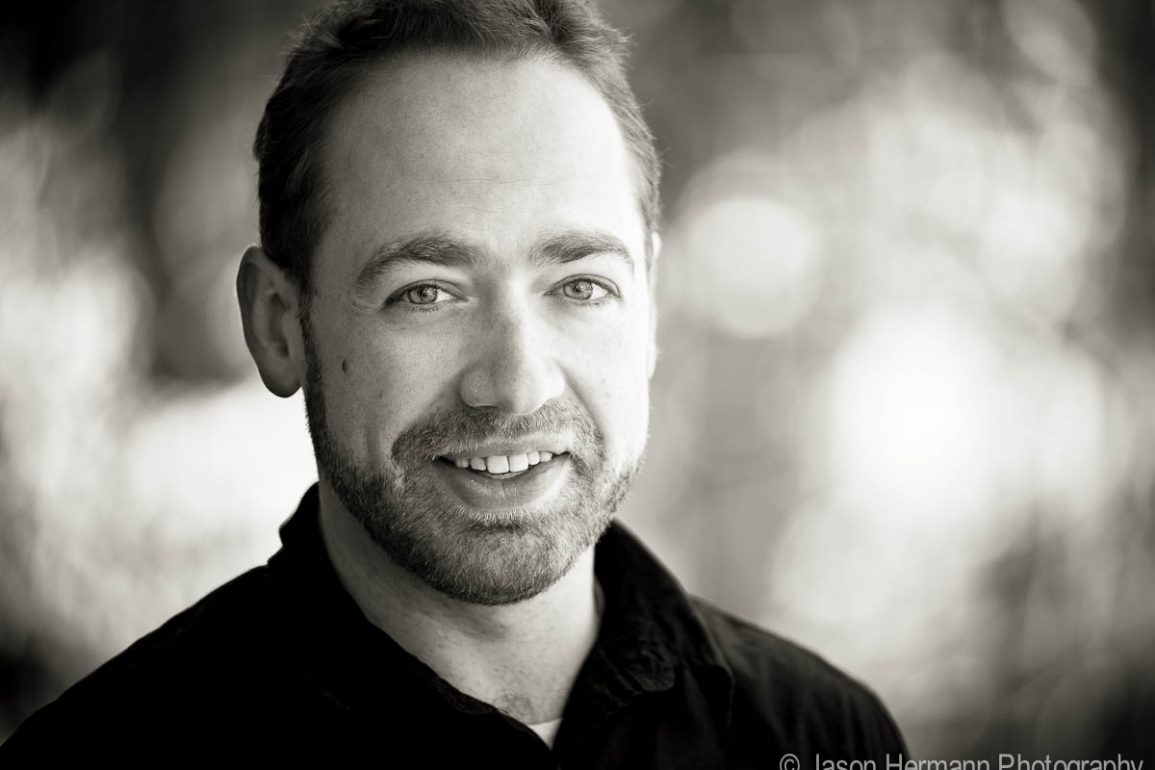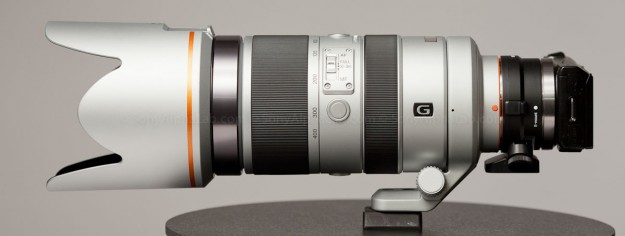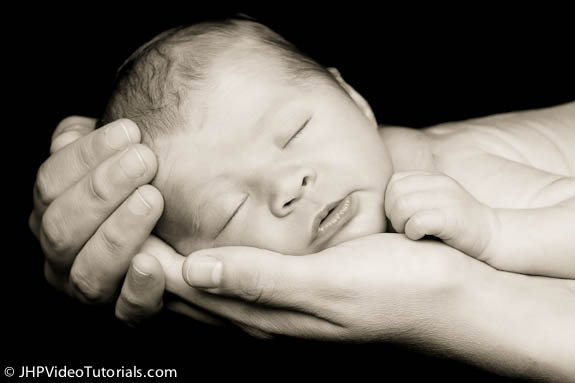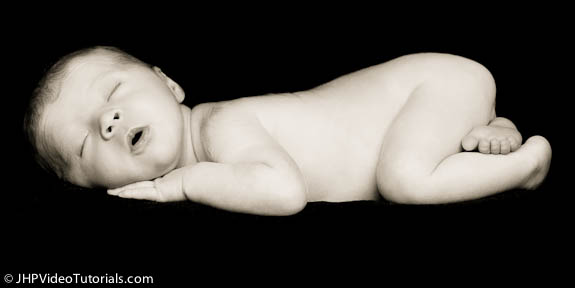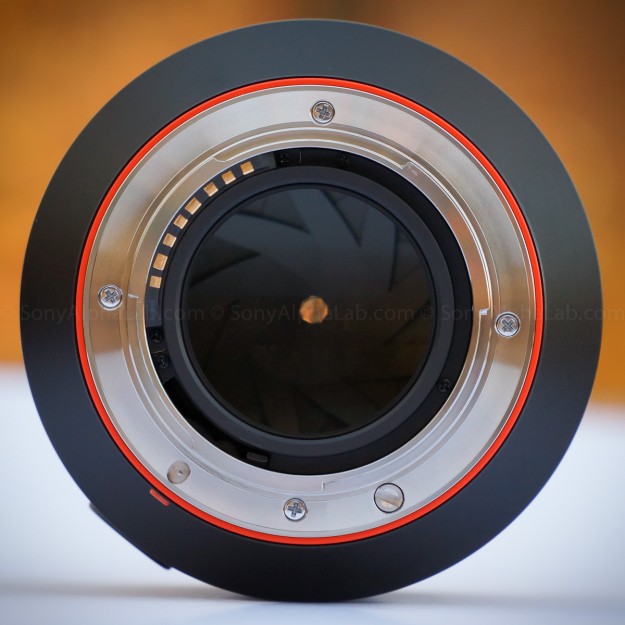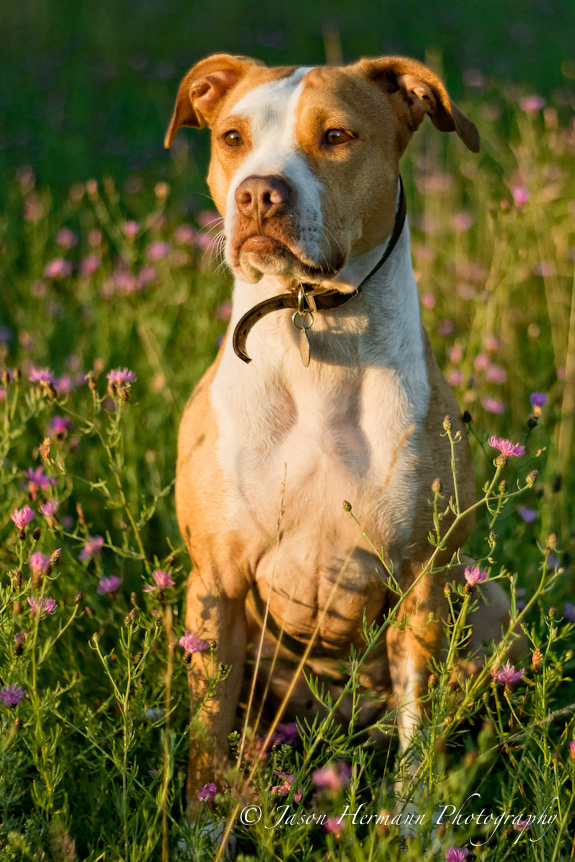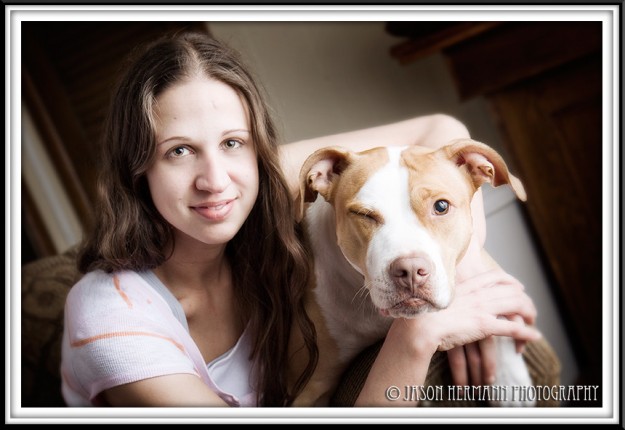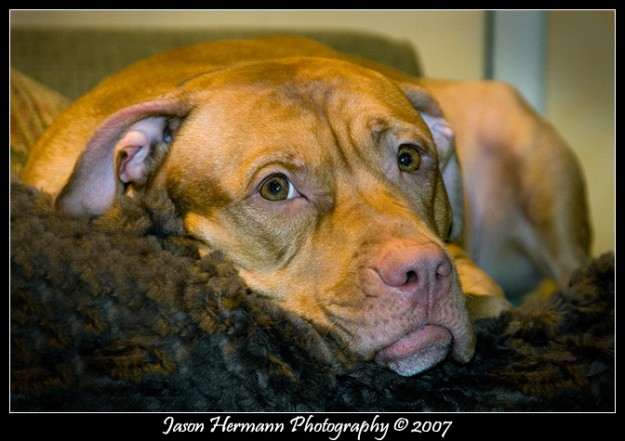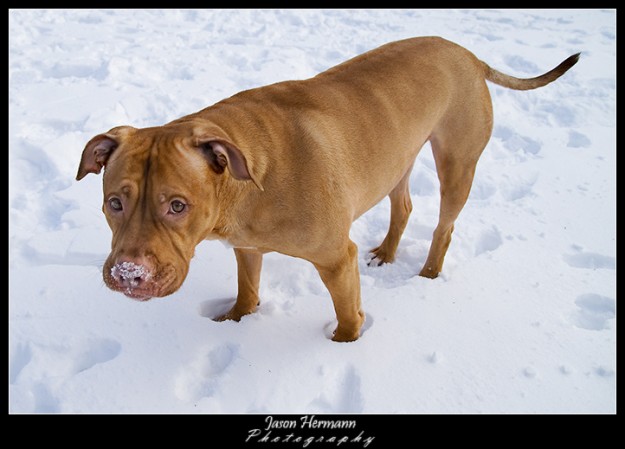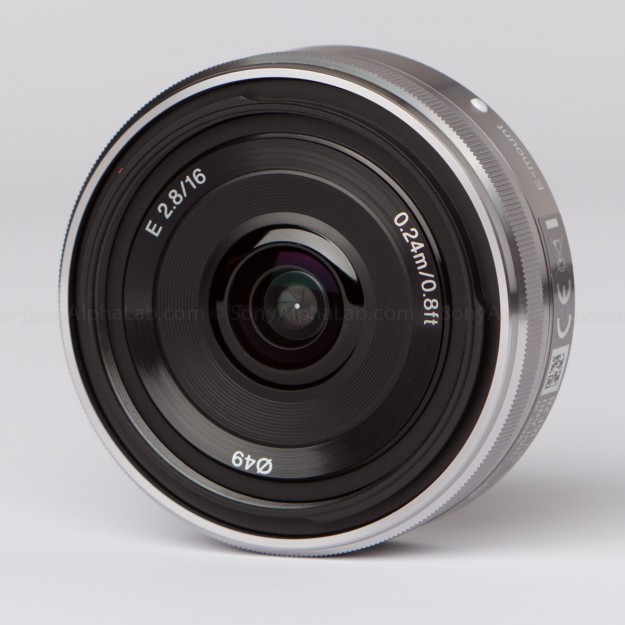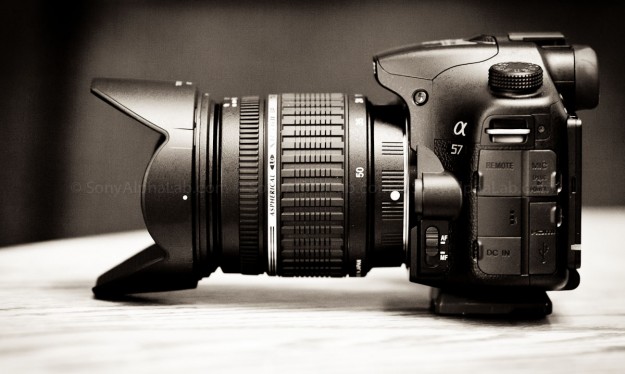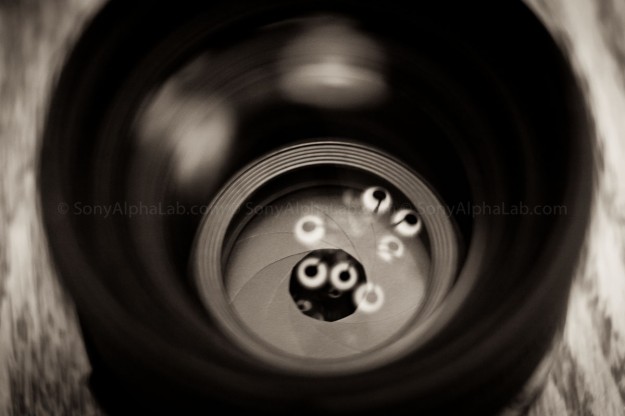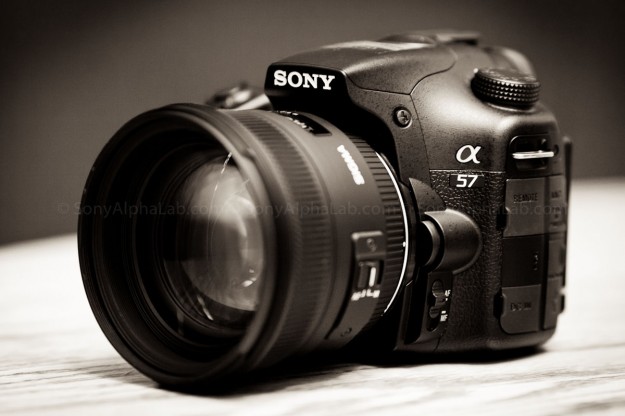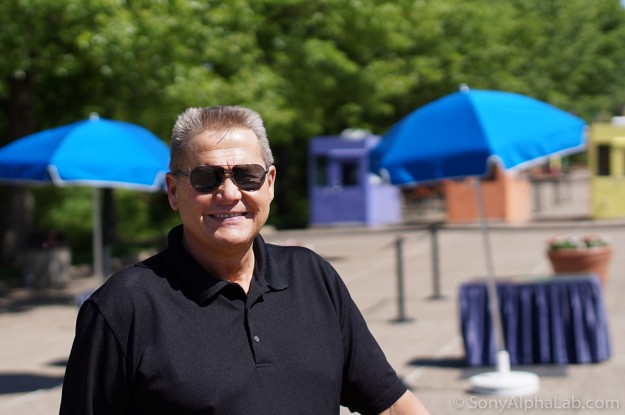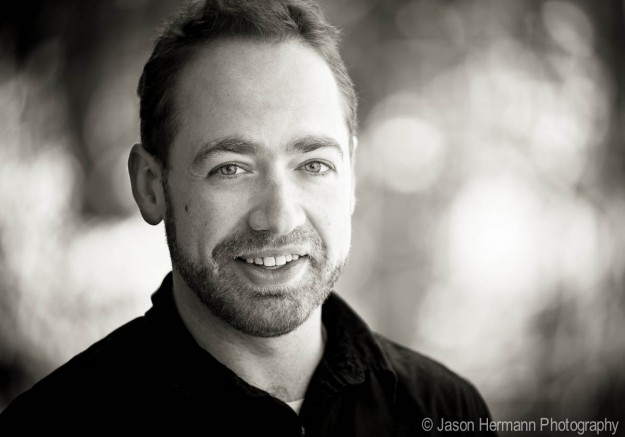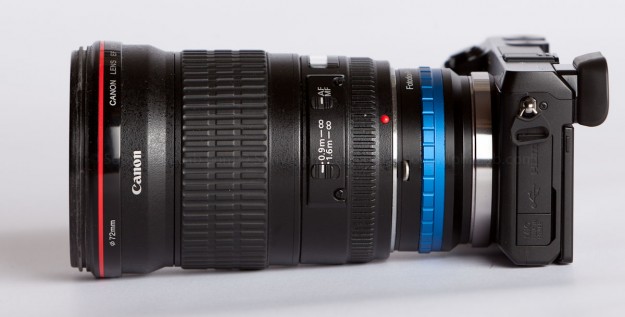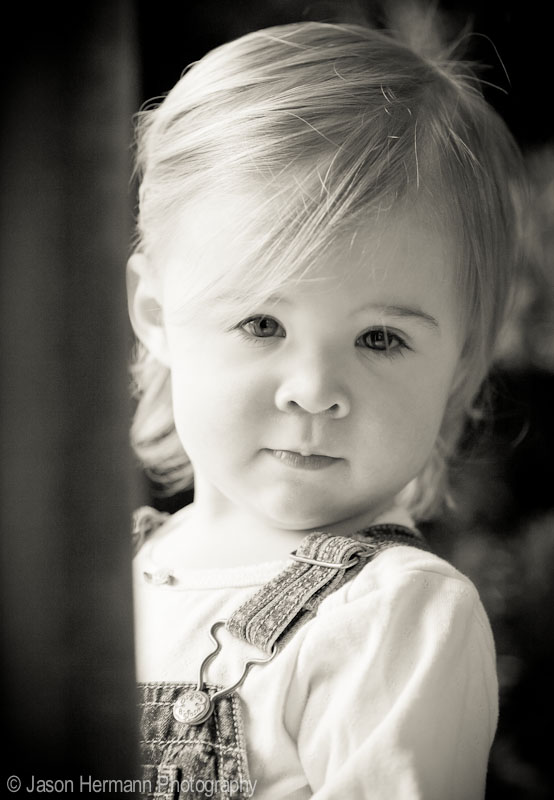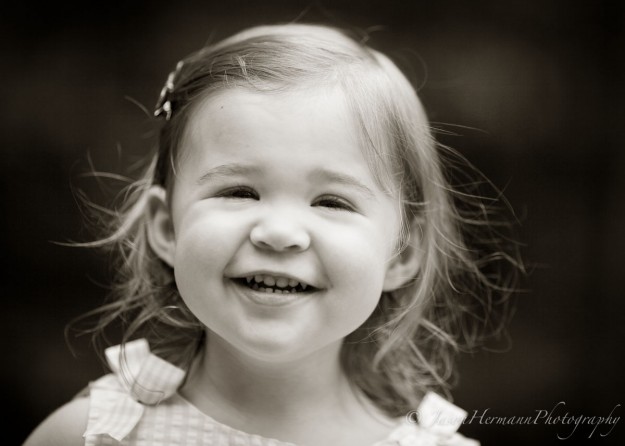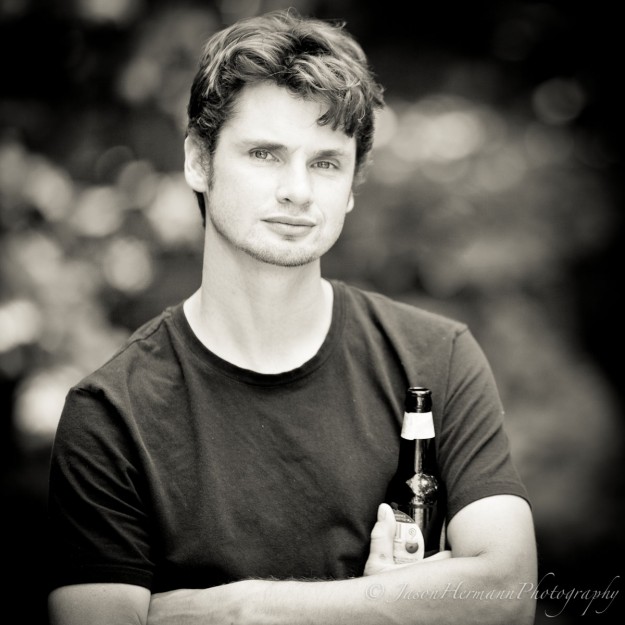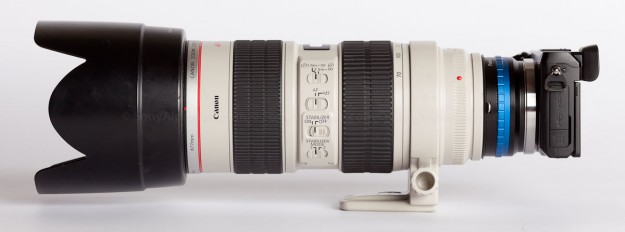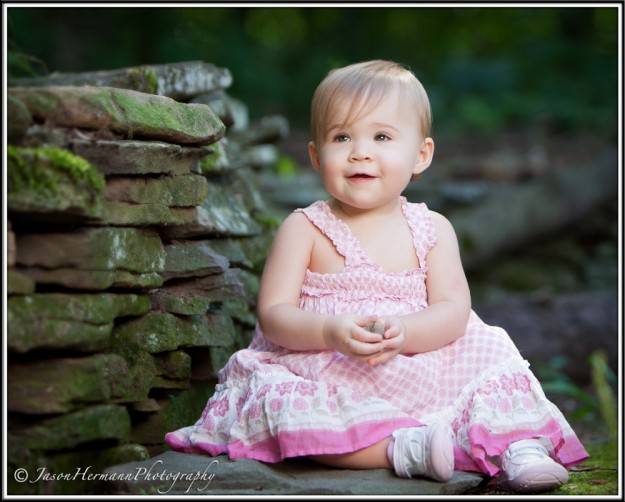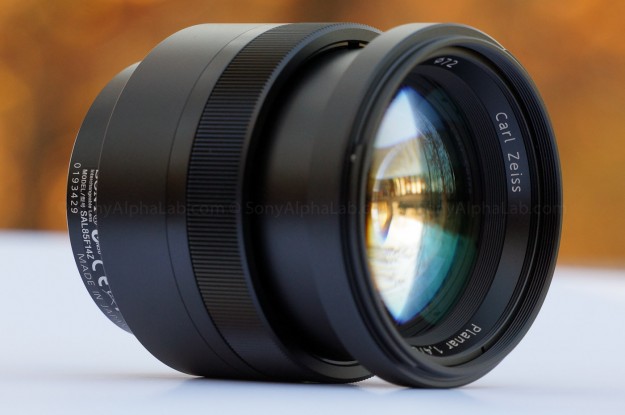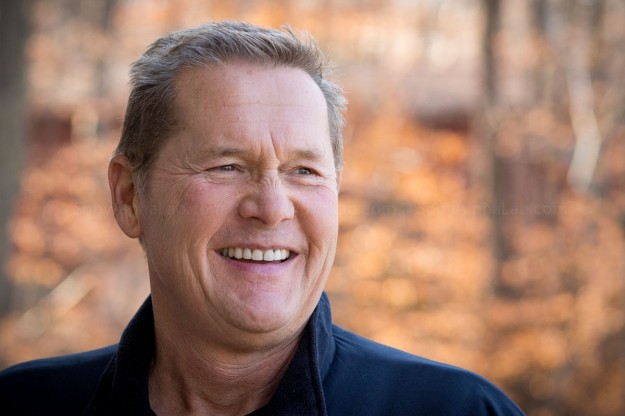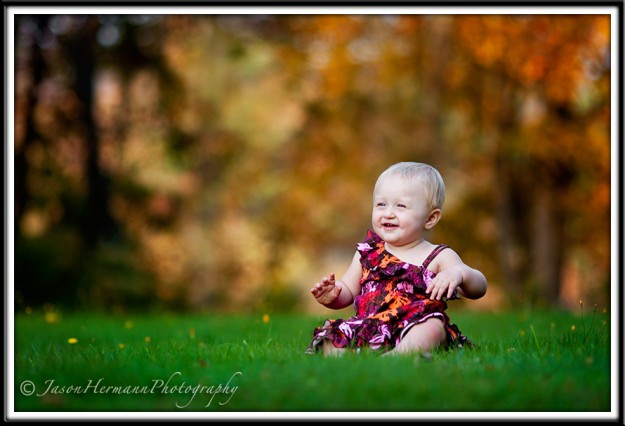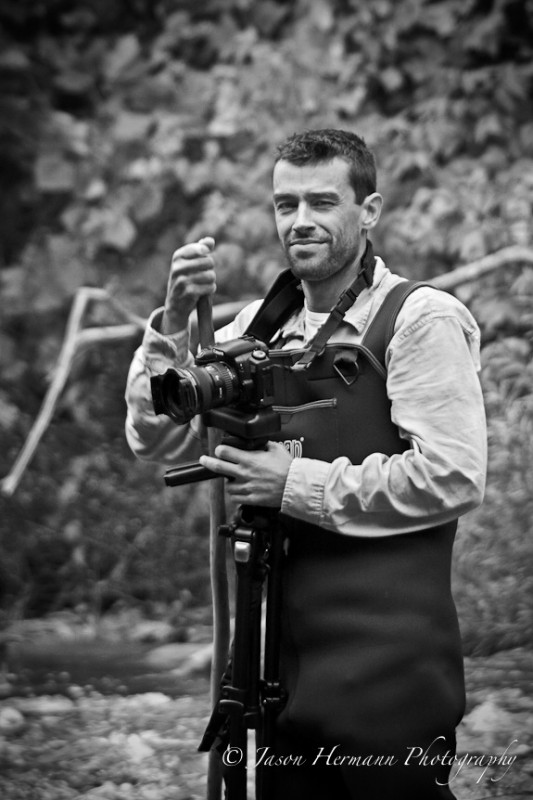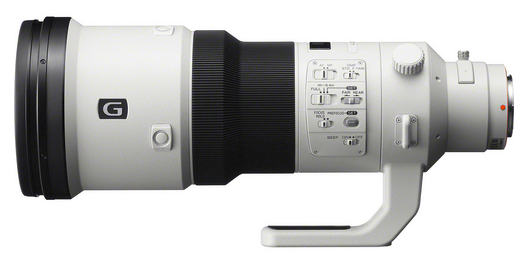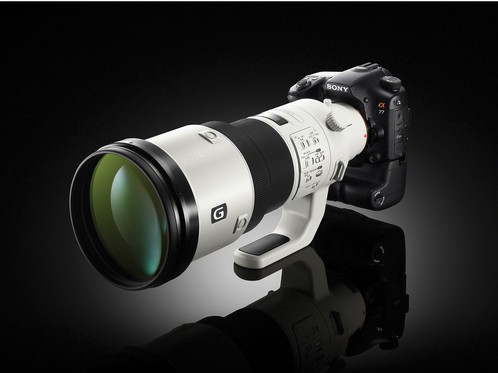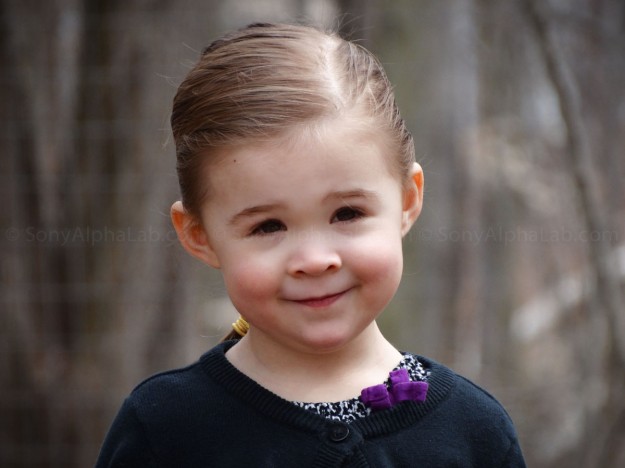So, which portrait lens is actually the best and why you ask? In this article I’ll go over depth of field as it relates to focal length, aperture, distance to the subject, and crop factor. Why some glass is better than others, and for what reason? What distance is optimal for portraits and at what focal lengths? Recommended Glass! If this sounds interesting, keep reading…
Note: Please keep in mind when reading this article that I used to do wedding and portrait work and used all Canon gear at the time. I have since switched to Sony, but still have all my Canon gear as I just can’t let it go 
I currently own a Sony Nex-7 and I’m eager awaiting the new Full Frame A99 that is supposedly coming out soon!!
Intro to Portrait Lenses
To start off this article on portrait lenses, I want to go over a few fundamental concepts about portraiture that will effect your lens choices and portraits overall.
- Distance to subject and perspective
- Focal length and perspective
- Distortion
- Aperture
- Sharpness
- Bokeh (Lens Blur effect)
- Cost
- Image stabilization (IS, OSS, VR)
Distance to the Subject
The ideal distance to the subject yeilds us the correct perspective, which will insure the features are captured with the correct proportions the human eye expects to see. That might sound confusing and I apologize, but it really is a pretty simple concept to grasp. When photographing people you want to be at least 10 feet away ideally and even further for groups. This distance might sound like a lot, but it really isn’t as it relates to perspective.
When using a wide angle lens up close for a head shot you will yield a very distorted look enlarging the nose and altering the perspective so much that the ears disappear. Check out the image below of Chopper. Although not a human you can clearly see the distorted effect that this Sigma 10-20mm lens has on my four legged friend
His tongue is stretched and his nose and head are so ballooned he looks like the Tasmanian Devil from the cartoon! A very cool effect mind you, but not particularly flattering for a Senior Portrait head shot or a tight family photo.
However, in the correct circumstances a wide angle lens can create amazing landscape style portraits like in the image below of Grand Central Station and our friends Michele and Anthony.
Why the wide angle lens “works” for the Grand Central Station image, and not the other is muti-fold, but basically it’s the distance to the subjects as it relates to the camera and lens. Because I’m so far away in the Grand Central Station portrait, the perspective is correct enough that the models are not distorted looking. The point being, distance matters so you have the correct perspective on your subject and there “features” appear in the correct proportions. This way your model in theory should look there best. In other words the focal length of the lens has no effect on the perspective of the portrait, the distance controls perspective. So that being said, Any focal length in theory can be good for portraits if used correctly
Focal Length
Focal length also matters!! In the image below I was using my 5D Mark II, and Canon EF 100–400 f/4-5.6 L IS lens at about 20 feet away. I got down on my belly and zoomed in to 400mm. This high focal length allowed me to get a great head and shoulders photo with no perspective distortion. This high focal length in relation to the subject to background also created an amazing fall foliage bokeh. The only downside I can think of to using a lens like this is you will need some room between you and the model which can be tuff at times.
The Sony equivalent lens to this is the 70-400mm f/4-5.6 G SSM Lens and you can check it out over Here>>
The ideal focal length varies depending on what your shooting. For example, knowing that 10-12 feet is a good distance, the focal length will need to change in order to get a tight head shoot vs a full body shot. I personally love using my Canon 70-200mm lens on my full frame 5D Mark II for baby and child portraits.
That 70-200mm focal length gives me enough range in my studio at ~10-12 feet to zoom in close for a killer face portrait, quickly adjust to about 135mm for a head and shoulder shot, then go out until I get a nice full body shot. This can all be done in about a second with this lens. The downside of using a lens like this is it can get heavy after a bit, especially if your not used to it. Strap on a 5D Mark II with a battery grip and you have one pretty heavy set-up. It’s tuff for Michele, but she can do it.
Check out he pics of Layla below both taken with the Canon EF 70-200mm f/2.8 L IS USM lens at the same distance.
If I need to shoot a family I would prefer to use a 70-200mm lens and move as far back as needed, but sometimes that is just not possible. So I would put the Canon 24-105 f/4 L IS lens on and adjust the focal length until I can fit the group nicely.
[divider]
Sharpness and Bokeh
Now we have the issue of sharpness and bokeh. This is where lens quality and large apertures come into play, which intern usually gets expensive 
Here’s the back of the Sony 85mm f/1.4 Carl Zeiss lens so you can see how large the actual glass is on the camera side.
The Bokeh is the area in a portrait that is buttery looking behind and in front of the focal point. Like in the image below of Allison taken with the Canon EF 100-400mm f/4.5-5.6 L IS USM Lens.
Sharpness is all about optical quality and like everything else, you get what you pay for $$$. Super high quality glass is very pricey, for a number reasons:
- Ultra-Low Dispersion UD Glass
- Fluorite & Aspherical Elements
- Super Spectra Multi Coating
- Image Stabilization, Vibration Reduction, Optical Stabilization,, ect..
- Glass Polishing process
Usually the lenses with the killer glass are also better built and have at least some weather sealing if not awesome weather sealing. Designed for hard core professional use and abuse including what nature has to offer. The larger and heavier glass also needs a beefed up housing and the weather sealing pretty much guarantees no dust will get inside the lens.
Prime lenses are known for being the sharpest, because they have only one focal length. No moving parts other than the focus and possibly image stabilization hardware. So inherently you become the zoom by moving forward and back. This can be brutal in certain portrait sessions such as kids that are have a hard time staying still, but the quality and sharpness of a prime lens is incredible!!
Cost
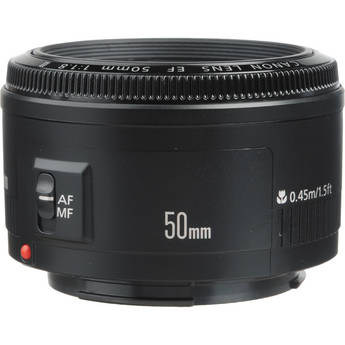
Not all good portrait lenses are expensive though. The Canon 50mm f/1.8 II Prime lens for example is awesome and incredible cheap at only ~$135. This lens might not focus fast or have any bells and whistles, but it’s very sharp and makes for a killer low budget portrait lens. The 50mm focal length is also a favorite for baby portraits, as it allows you to get relatively close to insure safety ect… Babies are so small you can get away with a 50mm lens up close for a lot of images without much distortion. A must have for anybody starting out in portraiture photography! I still have this lens in my camera bag because I like it so much.
Below is a few photos I took with it:
Image Stabilization
Image stabilization is also a huge factor that can jack up the cost of a portrait lens really quick! The newest forms of Image stabilization are nothing short of incredible! This allows for hand holding at very low shutter speeds. If you have an unsteady hand I highly recommend trying one of these lenses out so you can see it with your own eyes through the lens. When your looking through and the IS turns on you can see the scene just smooth out. It’s incredible!! I can get down to as low as 1/15th on the Canon EF 70-200mm f/2.8 L IS lens @ 200mm if my subject is super still.
Sony has an in camera solution called steady shot, so most of the Sony A-Mount lenses do not have image stabilization. The Sony Nex E-Mount lenses however, have OSS (optical Steadyshot) builo in to most of them, because the camera body is so small Sony could not fit the in camera steadyshot feature. Check out all the Sony E-Mount lenses in anice guide form Here >>
[divider]
Recommended Portrait Lenses
As long as your at the correct distance given the focal length your using, any lens can take a great Portrait! Good compositions, taking note of the background, posing, exposure, lighting, ect… all contribute to the quality of the portrait. Remember, it’s not all about the glass. It’s really all about what focal length to use under which circumstance, and more importantly having the camera set correctly for a sharp correctly exposed photo.
That being said, the killer glass will take your images to next level, there is no question!!
Note: I’m going to list my recommended lenses based on different types of portrait scenarios. The lenses I chose for the main list I’ve either owned and used personally or I have a friend that has one and I’ve heard nothing but good things about. The extra recommend lenses for each section are just killer lenses based on articles and reviews I’ve read. This list is by no means complete as there are dozens of other great lenses out there, but I don’t know enough about them to include them in my list.
[divider]
Best Wide Angle lenses for Portraits:
I like to have some zoom flexibility with my wide angle lens at times for wedding and family fun types of portraits, and a high quality wide angle zoom is nice to have for this type of work in my opinion. Michele and I used a 17-55mm lens on our 1.6x crop factor camera to give it an effective focal length of ~27-88mm. And on the Full Frame 5D Mark II we used the 24-105mm lens.
This gave us that wide focal length we needed to get a group or room shot in tight quarters, as well as zoom in a bit for a much more isolated portrait, usually blurring the background in the process depending on the distance to your model.
Prime lenses are going to yield the sharpest results, but high quality zoom lenses these days are incredible sharp and offer more flexibility when time is critical.
Canon EF-S 17-55mm f/2.8 IS USM Lens

The Canon EF-S 17-55mm f/2.8 IS USM Lens is a large-aperture lens specifically designed for EF-S type digital SLR cameras (Canon T3i, Canon 60D). This lens offers a super wide angle to short telephoto zoom range, with built-in Image Stabilization. Great value for the dollar. The focal length is equivalent to approx. 27-88mm in 35mm format. This lens features Canon’s latest optical Image Stabilizer technology, providing up to 3-stop compensation caused by camera shake and slow shutter speeds. This ensures clear, crisp images, even in dim light. Designed specifically for digital photography, the lens has specially shaped lens elements and Super Spectra coatings to suppress ghosting and flare, which can be caused by reflections off digital camera sensors. This is one of the first lenses with L quality optics we purchased. Although it doesn’t have good weather sealing and is only for crop factor cameras resulting in the Non L tag, this lens is awesome for portraits and produces tack sharp images!! Below is one of my favorite photos I ever took with EF-S 17-55 lens.

Sigma 17-70mm f/2.8-4 DC Macro OS HSM Zoom Lens
I used to have this lens and loved it! It’s very affordable for starters, and the 17-70mm range allowed me to really experiment with compositions all from one spot.I purchased this lens with my first SLR which was the Canon Rebel XTI. It was a great combo and a much better lens than the standard lit lens from what I read. Turns out to be incredible and I wish I still had it
The versatile Sigma 17-70mm f/2.8-4 DC Macro OS HSM Zoom Lens is a standard macro zoom for digital SLR cameras with a Sigma lens mount. The lens is designed for cameras with APS size chips, and covers the most frequently used focal lengths. The maximum aperture of f/2.8 is fast enough for use under a wide variety of lighting conditions. The OS anti shake feature offers the use of shutter speeds approximately 4 stops slower than would otherwise be possible. Hyper Sonic Motor (HSM) ensures quiet and high speed AF as well as full-time manual focus.
I took these shots shortly after the camera and lens arrived in the mail from BHPhotoVidoe!!
Sony 16-50mm f/2.8 Lens
I got a chance to use this lens recently on the Sony A77 and it’s pretty solid all around. The f/2.8 constant aperture makes this a great choice for those low light situations often found in wedding receptions and around the house indoors.
Check out this sample portrait of my good friend Butch from work. He’s one of the good guys, and I think this lens did a fantastic job capturing him with his work truck in the background.
Sony 16mm f/2.8 E-Mount Pancake lens
This lens is sharp in the center and very slim. It also has a super fast f/2.8 aperture which is nice. I really enjoy using this lens because I can also fit the camera in my pocket when using it!! This lens takes some heat for the soft corners, but in reality they are really not that bad. Check out my full review over Here >>
Tamron SP AF17-50mm F/2.8 XR Di II LD Aspherical (IF)
This lens was fun to use on the Sony A57, but for video it’s not the greatest as the AF motor is a tad noisy 
More Excellent Wide Angle Lenses for Portraits:
- Nikon AF-S Nikkor 16-35mm f/4G ED VR Wide Angle Zoom Lens
- Nikon AF-S Zoom-Nikkor 17-35mm f/2.8D IF-ED
- Canon EF 16-35mm f/2.8L II USM
- Nikon AF-S Nikkor 24mm f/1.4G ED Wide Angle Lens
- Nikon AF-S NIKKOR 35mm f/1.4G Wide-Angle Lens
- Sony Distagon T* 24mm f/2 SSM Wide Angle Lens
- Sony 16-35mm f/2.8 ZA SSM Carl Zeiss Vario-Sonnar T* AF SLR Lens
Best Medium Telephoto lenses for Portraits:
Primes are the way to go for this range of lenses in my opinion as the wide angle zooms usually cover the focal lengths below!! Here’s a few great lenses and sample pics to show what they can do for you and your portraits.
Sigma 50mm f/1.4 EX DG Lens
I had a blast using this lens on the Sony A57 and man does it produce some killer frames!!
Canon EF 135mm f/2L USM Lens
This lens is nothing short of amazing! Best on a Full Frame in my opinion and it’s only short coming is not having the option for Image Stabilization. The Canon EF 135mm f/2 L USM Lens is designed to meet the needs of a wide range of advanced amateurs and professionals. A ten element optical formula with two UD-glass elements serves to correct residual aberrations, resulting in superb sharpness and high image quality. It is also able to obtain superior background blur with the f/2 wide aperture.
I love using this lens on the Sony Nex cameras as well!! This photo below of my good friend Mark was taken with the Canon 135mm f/2 L lens, and the Sony Nex-5n!! More sample pics Here>>
Here it is on the Nex-7, and as you can see, it really doesn’t matter what brand lens your using anymore. With the Sony Nex system you can simply by an adapter and use all of your other glass!! Yet another reason why I kept all my Canon lenses
Here’s a few more sample portraits with this incredible lens!!
Canon EF 70-200mm f/2.8 L IS USM
Another amazing lens that is incredible sharp all the way through and has a killer range! Sony, Nikon, Sigma, and Tamron all make a high quality version of this lens, because it’s recognized as a great combination of zoom range, aperture, weight, and price. It’s pretty much the easiest lens to use when taking portraits of individuals as the range meets all the critical portrait frames without moving usually. Full body, 3/4, shoulders up, head shots!!
This particular lens from Canon is constructed of 23 elements in 19 groups (including 1 Fluorite and 5 UD elements) which help deliver the sharpness and reduced aberration which professional photographers rely upon from Canon. The IS II Optical Image Stabilizer provides up to 4 stops of correction at all focal lengths. This lens has a minimum focusing distance of 3.9′ (1.2 m) at all zoom settings so you can get the shot when shooting close to your subject even in smaller spaces. Like all Canon L-series lenses, this telephoto zoom is dust- and moisture-resistant and designed to keep on going even in the most challenging of environments.
Check it out mounted to my Sony Nex-7!!
Here’s a few shots that I just took our girl Layla and an image of Michele from last year taken with the 70-200mm lens.

Sony 70-200mm f/2.8 APO G(D) SSM Lens
The Sony is another excellent 70-200mm lens that I’ve used and it can produce the same quality shots as the canon images above!!
Sony 85mm f/1.4 Carl Zeiss Planar T* Autofocus Lens – SAL-85F14Z
Another excellent lens with a killer bokeh and image sharpness wide open all the way through.
Canon EF 85mm f/1.2L II USM Autofocus Lens
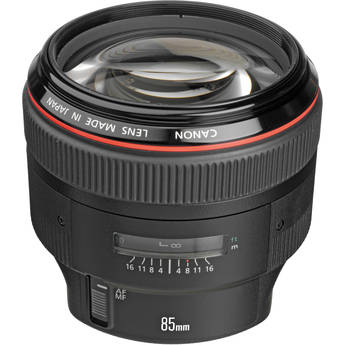
The Canon EF 85mm f/1.2L II USM Autofocus Lens is a fast lens that delivers superb optical performance.I had an oppertunity to use this lens when my buddy Kelly came over from Chicago area. It’s really heavy as the glass elements are gigantic. The pictures that come off this lens are magical, just like the 135mm f/2 mentioned earlier.
A maximum aperture of f/1.2 makes it the professional’s choice for shooting without flash in low light conditions. The large aperture also provides fine control over depth of field for compelling portrait photography. Retaining the impressive optical performance and large aperture of its predecessor, this medium telephoto lens has been improved with a Ring-type USM, high-speed CPU and optimized algorithms to achieve an autofocus speed approximately 1.8x faster than the original. The high-speed AF and circular aperture create a shallow depth-of-field that brings attention to the subject and blurs the background, which is ideal for portraits and weddings.
This photo of Kelly was taken with the 85mm f/1.2 L Lens!! Magical to say the least, all natural light.
Canon EF 24-105mm f/4L IS USM Lens

This lens comes standard on the Canon 5D Mark II for a reason! It’s incredible sharp and the range is as good as it gets for an all around lens on a full frame camera in my opinion. I have used this lens for everything imaginable including tons of Portraits, Landscapes, Macro, Video, and more.. I was tempted to put this lens with the wide-angle zooms, but the 105mm focal length is pretty much perfect for Portraits and puts it into this category 
Take a look below for a range of samples from the past 2 years or so using the Canon 24-105 f/4 L IS.
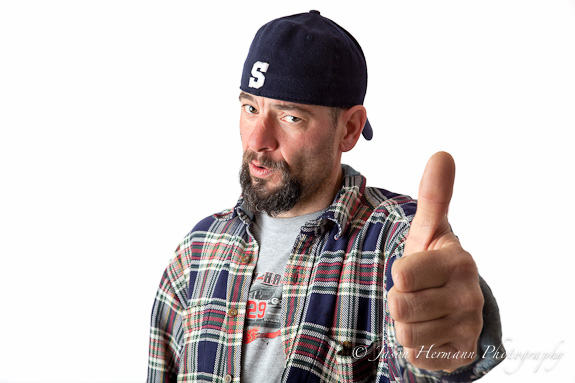
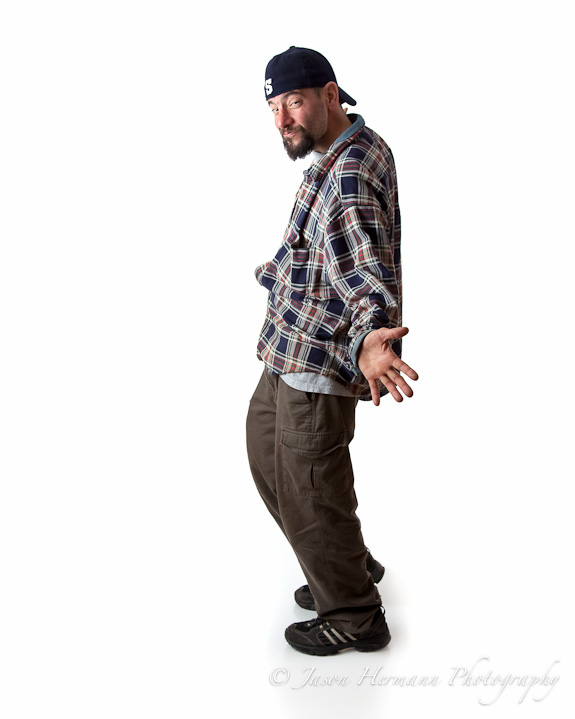

Using the wide angle end to our advantage, we help create an exaggerated perspective of Michele.
Nikon Telephoto AF Micro-Nikkor 105mm f/2.8G ED-IF AF-S VR

The Nikon AF-S VR 105mm f/2.8G IF-ED brings the benefits of vibration reduction (VR) to the domain of Macro photography. It offers high-resolution, high-optical performance for both digital and 35mm film format SLR cameras. When used with digital cameras, equivalent focal length in 35mm terms is 157.5mm. This lens incorporates Nikon’s second-generation vibration reduction system (VR II) that allows flexible hand-held shooting by stabilizing the image to the equivalent stability of a shutter speed that is 4 stops faster when compared with a conventional lens. This in effect eliminates image blur caused by camera shake, particularly when shooting in low-light conditions.
Note: G-type lenses are fully compatible with all current camera models (as of 01/04). The older camera models F4, N90/s, N70, N8008/s, N6000 will only work in Program and Shutter Priority modes. Note: VR feature will only work with Nikon’s F6, F5, F100, N80, N75, N65, D100 & D1 and D2-series (or any newer model) cameras.
Note: AF-S feature is not supported by certain camera models. Please click here for a list of compatible models.
Sigma 70-200mm f/2.8 II EX APO Macro HSM

The Sigma 70-200mm f/2.8 II EX APO Macro HSM telephoto zoom lens has a large maximum aperture of f/2.8 which remains constant throughout the zoom range, an improved optical performance, macro capabilities, and is optimized for digital SLR cameras. It also features super multi-layer coating, which reduces flare and ghosting. All zooming and focus movement is achieved internally, allowing for a constant length and great resistance to dust and moisture. It comes rendered in a hard coated, baked black EX crinkle finish. The Hyper Sonic Motor (HSM) ensures a silent, high-speed AF function as well as full-time manual focusing capability for Sigma, Canon, and Nikon mount lenses. This lens can also be used with the 1.4x EX or 2.0x EX APO Tele Converters (optional), becoming a 98-280mm f/4 autofocus telephoto zoom lens or a 140-400mm f/5.6 autofocus telephoto zoom lens respectively.
Tamron 70-200mm f/2.8 Di LD (IF) Macro Lens

The Tamron 70-200mm f/2.8 Di LD (IF) Macro Lens is a telephoto zoom lens that has a large maximum aperture of f/2.8 which remains constant throughout the zoom range. It also offers an excellent “close-focusing-distance” minimum of just 3.1′ (0.95 m) throughout its entire zoom range which is awesome for wedding detail work! When mounted on an APS-C sensor size digital SLR camera, it provides a focal length equivalent of 112-320mm. Di (Digitally Integrated Design) is a designation Tamron puts on lenses featuring optical systems designed to meet the performance characteristics of digital SLR cameras. Features like LD glass elements and Internal Focusing put this lens in the same category as the much bigger and more expensive professional Tamron lenses.
Nikon AF-S Nikkor 70-200mm f/2.8G ED VR II Lens

The Nikon AF-S Nikkor 70-200mm f/2.8G ED VR II Lens features an innovative Vibration Reduction (VR) system that allows handheld telephoto zoom shooting even in poorly lit conditions. The VR system minimizes image blur caused by camera shake, and offers the equivalent of shooting at a shutter speed 4 stops faster than what the camera is set for. This is the perfect lens for low-light, sports, fashion, portraits and other images that require distance between the photographer and subject.
More lenses certainly worth considering in this range:
- Sony 16-80mm f/3.5-4.5 Carl Zeiss Vario-Sonnar T* DT Autofocus Lens
- Sigma 105mm f/2.8 EX DG Macro lensSigma 150mm f/2.8 EX DG OS HSM APO Macro Lens
- Tamron Telephoto SP AF 180mm f/3.5 Di LD IF Macro Autofocus Lens
- Tamron Telephoto SP AF 90mm f/2.8 Di Macro Autofocus Lens
- Nikon Telephoto AF DC Nikkor 135mm f/2.0D Autofocus Lens
- Nikkor 180mm f/2.8D AF ED-IF Autofocus Lens
- Nikon Telephoto AF-S Nikkor 300mm f/4D ED-IF Autofocus Lens
- Nikon AF VR Zoom-NIKKOR 80-400mm f/4.5-5.6D ED Lens
- Canon Telephoto EF 400mm f/5.6L USM Autofocus Lens
- Tamron Zoom Telephoto SP AF 200-500mm f/5-6.3 Di LD IF
- Canon Telephoto EF 400mm f/2.8L IS Image Stabilizer USM Autofocus Lens
- Nikon AF-S NIKKOR 85mm f/1.4G Classic Portrait Lens
- Sigma 85mm f/1.4 EX DG HSM
- Sony 135mm f/1.8 Carl Zeiss Sonnar T* Autofocus SLR Lens
Best High Focal Length Lenses for Portraits:
Now if you want a portrait like what you see in the sports sections of the newspaper, your going to need a serious focal length fast aperture lens. The most affordable fast versions are the 100-400mm style zooms, but other than that it’s primes all the way.
Canon EF 100–400 f/4-5.6 L IS lens

Another killer lens for portraits, sports, and wildlife!! The first EF lens with a zoom range from 100mm to 400mm, the EF 100-400mm f/4.5- 5.6L IS USM lens offers high resolution, superb contrast, neutral color balance, and Canon’s original built-in Image Stabilizer function. High zoom magnification is achieved by means of a 6-group configuration with 5 movable groups. Fluorite and Super UD glass completely eliminate secondary spectrum for superb color rendition. Autofocusing is fast and silent with Canon’s ring USM, and AF speed is further enhanced through an advanced, lightweight rear focusing design that incorporates a floating element for consistent image quality at all focusing distances from 5.9′ to infinity. This lens is also equipped with a dual-mode Image Stabilizer suitable for panning as well as stationary subjects. With full-time manual focus, one-touch zooming with a wide grip, and a special ring that permits adjustment of zooming friction, this is a lens that’s extremely easy to use, and ideal for a wide variety of applications including nature, wildlife, sports, and documentary photography.
Here’s a few shots I’ve taken with this lens that really show off it’s character in my opinion
Tamron 28-300mm f/3.5-6.3 XR Di VC LD II Aspherical IF Macro Lens

This was my first high focal length lens purchase a few years back. It didn’t have VR at the time, but the new model does which I linked. This is a great all around lens for the money. It’s relatively inexpensive, yet produces a killer focal range, and pretty sharp images at f/8!! The Tamron 28-300mm f/3.5-6.3 XR Di VC LD II Aspherical IF Macro Lens is now equipped with a Vibration Compensation (VC) mechanism. This lens is ultra-compact and light-weight, with a constant minimum focus distance of 1.6′ (0.5 m) and a high maximum magnification of 1:3. The remarkable achievements are brought about through XR (extra refractive index) glass and efficient use of aspherical lenses. The ideal “all-in-one” zoom lens, for indoor and outdoor use. The VC mechanism, developed by Tamron, features a triaxial configuration using three pairs of driving coils and slide balls around the compensator group of the lens’ optical system. Since the compensator lenses are supported with rolling friction of the balls, the response performance is enhanced and the construction is simple, which results in the compactness of the lens. As a result, dimensional increases are confined to a mere 0.7″ (17.8mm) in overall length and about 5mm in diameter. Di (Digitally Integrated) design is the designation that Tamron uses for lenses that feature the improved optical design that meets the performance characteristics of digital SLR cameras, as well as film cameras. When used with APS-C size (standard) digital Nikon SLR cameras, the lens provides an angle of view equivalent to approximately 42-450mm, covering the standard to ultra telephoto range with no sacrifice of quality or aperture range.
Here’s a few portraits I took with my lens a while ago when I first got it.
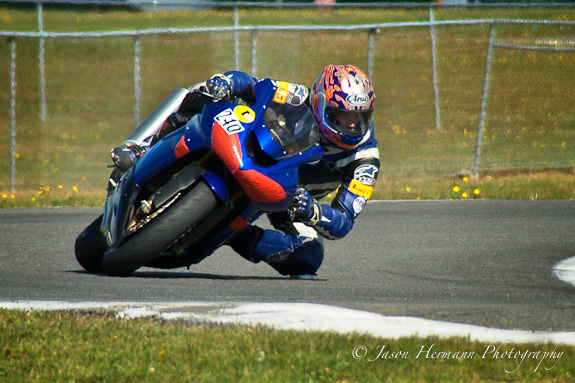
What the guys on the side lines use!!
Sony SAL 500mm f/4.0 G Lens
Canon Telephoto EF 600mm f/4.0L IS Image Stabilizer USM Autofocus Lens
Sigma APO 300mm f/2.8 EX DG HSM
The Sigma APO 300mm f/2.8 EX DG HSM lens is an ultra compact Apochromatic telephoto lens with a fast f/2.8 maximum aperture, and incorporates two Extraordinary Low Dispersion glass elements to reduce chromatic aberration to a minimum. It incorporates internal focusing which enables responsive and fast autofocus speed. A detachable tripod socket and rotatable drop in filter holder are also included. The improved DG lens design corrects for various aberrations. This lens is specially coated to get the best color balance whilst cutting down on ghosting caused by reflections from the digital image sensor. The lens provides the utmost correction against lateral chromatic aberration, which is a serious problem for digital SLR cameras. With the use of the optional Sigma APO teleconverters, this lens can be used as a 420mm f/4 AF ultra-telephoto lens with a 1.4X EX teleconverter, or a 600mm f/5.6 AF ultra-telephoto lens with a 2X teleconverter.
Sigma 120-400mm f/4.5-5.6 DG OS HSM APO Lens


This Sigma 120-400mm f/4.5-5.6 DG OS HSM APO Lens is an ultra telephoto zoom lens ideal for nature/outdoor or sports photography. It has a minimum focusing distance of 59.1″ (150cm) throughout the entire zoom range and has a maximum magnification of 1:4.2 making it useful for close-up photography. The OS (Optical Stabilizer) system minimizes image blur caused by camera shake, and offers the equivalent of shooting at a shutter speed 3-4 stops faster. This allows handheld telephoto zoom shooting even in poorly lit conditions. The use of the OS (Optical Stabilizer) system, HSM (Hyper Sonic Motor), APO apochromatic design, three elements of SLD (Special Low Dispersion) glass, and multicoated optics all enable this lens to provide a high level of performance throughout its entire zoom range, as well as versatility. A rear focus system insures quick, convenient manual focus and a non-rotating front barrel. The improved DG lens design corrects for various aberrations. This lens is specially coated to get the best color balance, while cutting down on ghosting caused by reflections from the digital image sensor. The lens provides the utmost correction against lateral chromatic aberration, which is a serious problem for digital SLR cameras. By adding the optional Sigma APO teleconverter, you can use this lens as a 168-560mm f/6.3-8 manual focus ultra-telephoto zoom lens with a 1.4X EX teleconverter, or as a 240-800mm f/9-11 manual focus ultra-telephoto zoom lens with a 2X teleconverter.
AF-S NIKKOR 300mm f/2.8G ED VR II Lens
The AF-S NIKKOR 300mm f/2.8G ED VR II Lens delivers superior professional performance with speed and incredibly sharp images which photographers have come to expect from Nikon. This fast lens is perfect for sports photojournalism, wild life photography and a wide range of subjects that require super telephoto focal lengths. Nikon’s VR II (Vibration Reduction) image stabilization allows handheld shooting at up to 4 shutter speeds slower than would otherwise be possible, and Nikon’s Silent Wave Motor (SWM) provides users with fast and quiet autofocusing. This NIKKOR is built with 11 elements in 8 groups which include 3 ED (Extra-low Dispersion) elements that help to produce images with superior sharpness and color correction with minimal chromatic aberration even at f/2.8. Lens elements are double-coated with Nikon’s Super Integrated Coating (SIC) and the advanced Nano Crystal Coat that provides amazing color consistency and reduced flair.
AF-S NIKKOR 200-400mm f/4G ED VR II Lens

The incredibly powerful AF-S NIKKOR 200-400mm f/4G ED VR II Lens from Nikon is a super telephoto zoom that delivers images with superior image quality. The lens features the innovative Vibration Reduction (VRII) system that allows handheld telephoto zoom shooting even in poorly lit conditions. The VRII system minimizes image blur caused by camera shake, and offers the equivalent of shooting at a shutter speed approximately four shutter speeds slower than would otherwise be possible. The lens is built with Nikon’s Silent Wave Motor (SWM) which provides swift autofocusing with superior accuracy and ultra-quiet operation. And the lens can be switched quickly from AF to manual focus. There are four switches conveniently positioned on the rear of the lens barrel used to engage different focusing modes. While autofocusing, the focus can be locked by engaging the AF-L switch; the AF-ON switch allows quick autofocusing on and off. When you engage the Memory Set switch you can focus on a subject and store the focused distance in the lens’ memory; it stores the information even if the camera is turned off. By switching to Memory Recall the lens will automatically return to the stored focal length. For example, if you are shooting a baseball game you can pre-set the focus from the camera to second base, shoot action at another area of the field, then engage Memory Recall to quickly capture the action at second base without having to refocus
What can be done with the Sony Nex Gear you might wonder?
Check out these Florida vacation articles with tons of sample photos showing off what can be done in the real world with just the 18-55mm kit lens and the 55-210mm zoom lens and my Nex-6. I have tons of portrait samples of family, animals and more! I’m sharing these articles with you to help drive home the point that it’s not necessary the lens your using, but how you take advantage of the tools you have at your disposal.
- The Animal Kingdom: https://sonyalphalab.com/2013/05/disney-vacation-nex-6-55-210mm-lens-the-animal-kingdom/
- Epcot Center: https://sonyalphalab.com/2013/05/disney-world-family-vacation-and-the-sony-nex-6-continued-epcot/
- The Magic Kingdom: https://sonyalphalab.com/2013/05/disney-world-family-vacation-and-the-nex-6-the-magic-kingdom/
- SeaWorld: https://sonyalphalab.com/2013/05/seaworld-in-florida-sony-nex-6-and-55-210mm-e-mount-lens/
- Pool and Hotel Fun: https://sonyalphalab.com/2013/05/vacation-photos-with-the-nex-6-pool-play-and-other-fun/
- HD Video Compilation: https://sonyalphalab.com/2013/05/disney-vacation-video-nex-6-and-gopro-hd-hero-cameras/
Conclusion
Well that is it for this article on which is the best portrait lens. Hopefully, if you were not sure before what type of lens you needed for a specific type of portrait, you now have a better idea!! Also, the point of this article was to drive home the fact that it’s more about using the right equipment for the job as apposed to a specific lens
Also worth noting is with the advancement of focus peaking on the Sony Nex camera system, using manual focus is now easy!! So, any lens can be used with adapters and the focus peaking tool to get killer results. Here’s a Guide to all the lens a adapters available for the Sony Nex camera system if your curious, or in the market 
I hope you all got something out of this article, and if there are lenses you would like to recommend or ask me about, please just fire away in the comment box! Also, I’m more than happy to offer advice if you have a specific budget, and or camera/ lens in particular your looking for
Jay
A few more recent pics of Layla:

